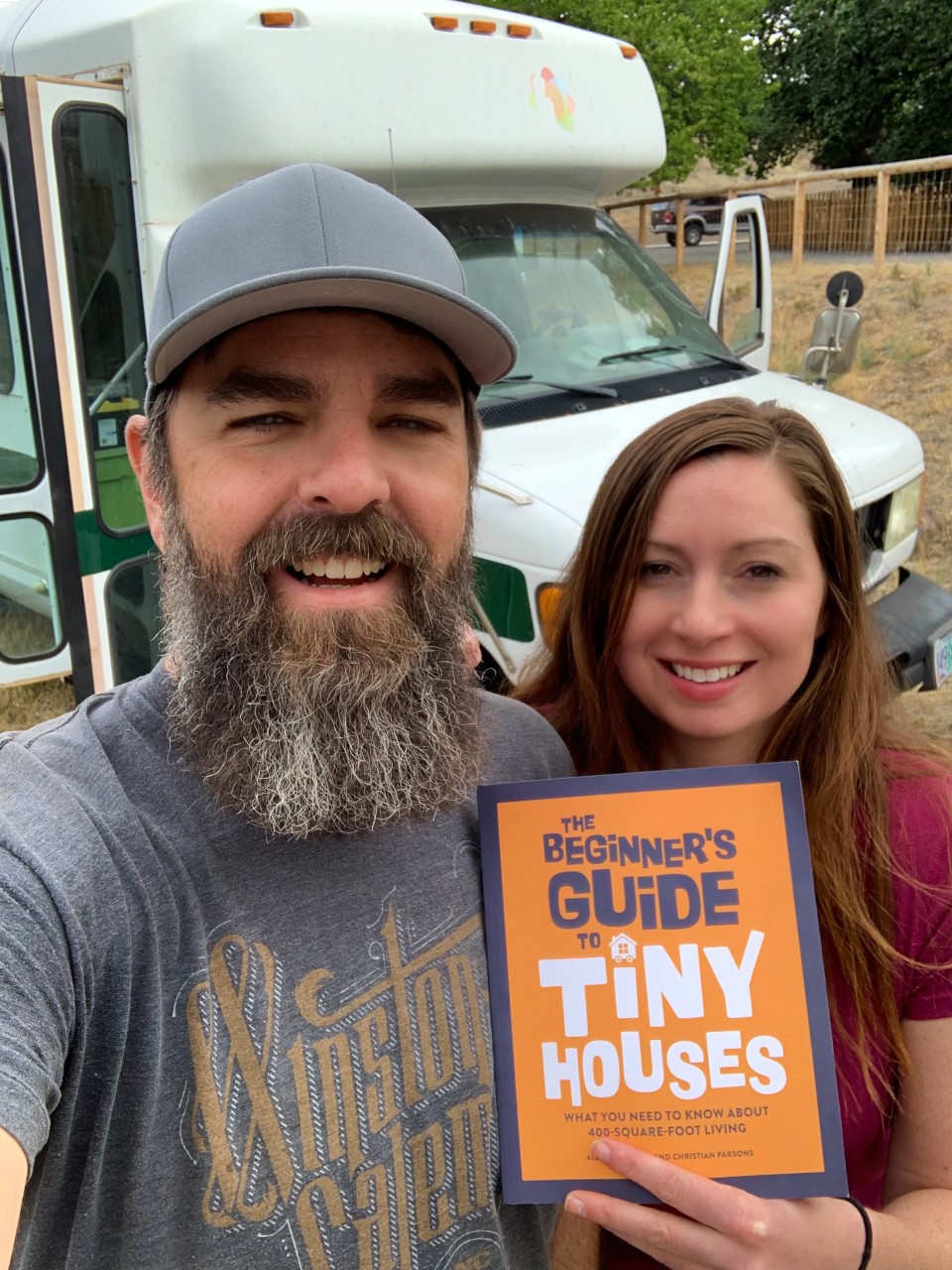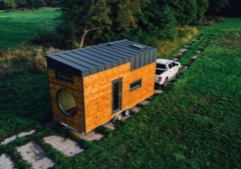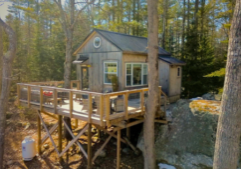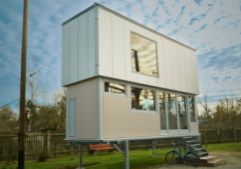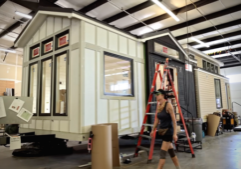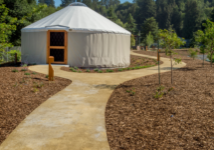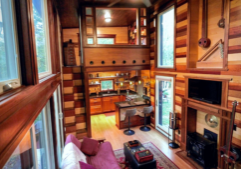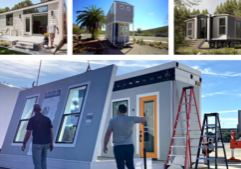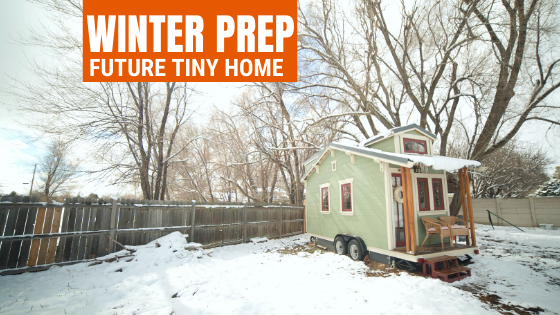
Winter in a Tiny House: 5 Ways to Prepare
Planning for your future tiny home? Consider the following important winter prep.
Tiny homes are a good option for people looking for financial freedom, mobility, and those in search of a different life. Keep in mind that most tiny homeowners usually face unique challenges, especially during winter.
Keeping your tiny house warm and cozy throughout winter doesn't have to be a hassle. You'll want to implement the essentials during the build phase. Then each year, start with a general check-up to determine the parts of your home that aren't functioning optimally and do your annual prep to help get your tiny home ready for winter.
Here's how to prepare your tiny house for winter.
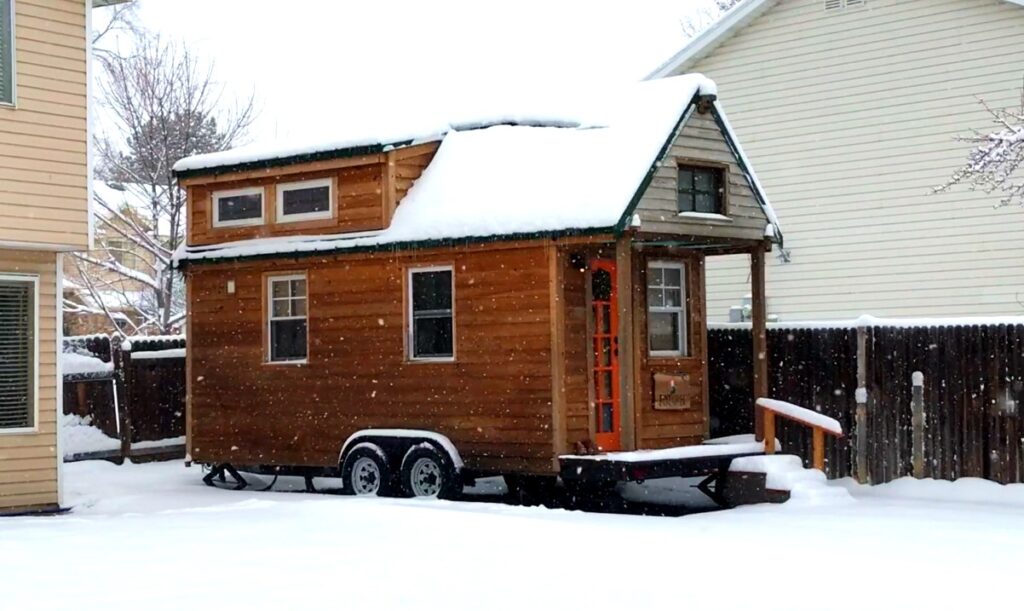
1) Inspect and repair your roof
When preparing your tiny house for winter, it's essential to ensure that your roof is in good condition. Clear off any debris and inspect the roof for any damage to get your roof ready for winter. Roof inspections can sometimes be complex, especially when the roof structure seems to have underlying issues. This is why you should hire a roofing professional for a thorough examination and expert advice.
However, the best, most affordable prevention is investing in quality durable roofing during your build. Professional installation may be well-worth it to avert any leaks or moisture issues. Though, things like severe storm damage can impact any roof.
Another good idea is to trim tree branches that may be hanging over your tiny house, so snow doesn't outweigh and make them fall on your roof, damaging it.
2) Insulate your tiny home
During construction is when you want to ensure proper insulation throughout your tiny house (trailer, floor, walls, ceiling). A tightly insulated home maximizes energy efficiency and minimizes energy loss. As a result, you'll keep your heating costs much lower. Good ceiling insulation also prevents ice dams from forming around your roof.
Air quality is a concern, too, especially when your tiny house is highly insulated. Investing in an air heat exchanger is worthwhile to improve indoor air quality. An ERV, or energy recovery ventilator, is a top option for small homes. It's a well-rounded system that mitigates mold and mildew risks by transferring both heat and moisture—a wet & cold weather concern. Another top benefit for the winter is that it brings in fresh air without losing heating energy.
You can use fiberglass, Rockwool, or cotton as viable insulation material options if you live in temperate climates. If you pack your tiny house in colder states, you can use spray foam insulation and a rigid foam board to prevent significant heat loss during winter. However, the better insulated your tiny house on wheels is, the more ready you are for potential relocations to various climates.
3) Protect pipes (and hoses) from freezing
If your pipes freeze, it means you won't receive warm water, and the pressure on the lines may cause them to burst. Protect your pipes from freezing temperatures, so your tiny house is prepared for winter. The best way to do so is to keep the water supply pipes inside your tiny house to ensure they aren't constantly exposed to air. On-board water tanks for homes on wheels fit the bill.
If your tiny home is connected to the water supply, insulate the pipes. You can bury a pipe underground below the local frost level to prevent them from freezing or place a heated hose on top of the ground.
For a tiny house on wheels-specific water system winterizing:
4) Use electric heaters
Investing in electric heaters is an easy way to keep your tiny home warm during winter because they're easy to maintain. Also, they often don't require any installation, or if one does, the costs are lower than gas heaters. Even with a wood stove, it's advisable to have a small space heater to offer supplemental heat in the cold mornings and to help maintain a safe temperature while you're away from home.
Consider power availability, space, and safety when choosing an electric heater for your tiny house.
5) Get an emergency generator
Winter season power outages can make your tiny home uncomfortable and difficult to live in. With a backup generator, you can keep your home lit, warm, and have the essentials running even without electricity. The warmth therein can prevent water supply pipes from freezing too.
Here's an incredibly powerful portable power station that can run an entire tiny house for around four days, with low power consumption demands.
Preparing for Winter in Your Tiny House
Keeping your tiny home cozy and warm and protecting your home from getting damaged by extreme weather conditions during winter should be a priority. Consider getting tiny home insurance to protect yourself from any financial obligations a brutal stormy winter season may bring forth. Use the above tips to prepare your little house for winter.

